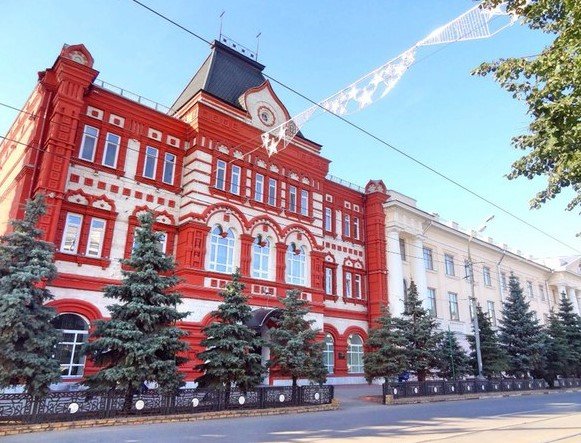Russia’s economy is facing a stormy road ahead, with warnings of a potential banking collapse, growing corporate caution, and a slowdown that’s sending ripples across markets. Recent analysis from Kremlin-linked experts suggests the nation’s financial system could be heading for serious trouble — if it’s not already there.
Alarming Signs from Russia’s Banking Sector
The Centre for Macroeconomic Analysis and Short-Term Forecasting (CMASF), a key think tank with close ties to the Kremlin, dropped a sobering report this week. It’s flagging an increasing risk of what it calls a “systemic banking crisis” in Russia. Basically, that means the whole banking system could be in danger of falling apart — not just a few weak spots here and there.
They’ve got a three-point checklist to watch out for: a run on banks by worried depositors, bad loans that exceed 10% of bank assets, or banks needing massive cash injections over 2% of Russia’s GDP to stay afloat. So far, none of these have happened — but the worry is that Russia is inching closer to these thresholds.
Let’s break that down. A run on banks sounds scary because it’s when everyone tries to pull their money out at once, creating a cash crunch. If loans go bad — meaning borrowers can’t pay back — banks lose money and confidence falls. And if banks need huge government bailouts, that signals serious trouble and strains national finances.
These aren’t just abstract risks. Russia’s economy has been bruised by international sanctions, volatile oil prices, and capital flight. Add to that a shaky domestic market and the effects of geopolitical tensions, and it’s no wonder experts are biting their nails.

Companies Holding Back Dividend Payouts
It’s not just banks that are tightening belts. Russian companies themselves seem to be getting nervous. The CMASF report noted a trend where firms are withholding dividend payments to shareholders. For anyone who follows corporate finance, this usually screams caution or even desperation.
Why? Companies might hold back dividends to conserve cash in uncertain times. It could be a sign they expect tougher months ahead or want to buffer against potential losses. For investors, it’s a warning flag — if firms aren’t confident enough to share profits, something’s up.
This behavior adds to the gloomy picture. When companies pull back dividends, it can shake investor confidence and reduce overall market activity. Combine that with banking fears, and you get a pretty heavy economic vibe.
Growth Downturn Casting a Long Shadow
To top it off, Russia’s economic growth is slowing sharply. The CMASF’s report hinted at a serious downturn, one that might weigh on the country for years. A slowing economy means less business activity, fewer jobs, and tighter budgets — all bad news for ordinary people.
Russia’s reliance on oil and gas exports means it’s vulnerable to global commodity swings, and sanctions are biting too. Together, these factors create a perfect storm for growth to sputter. Some analysts are already warning that the Russian economy could contract further in 2025.
It’s a tough pill to swallow. For a country used to flaunting its economic might, these signs of strain aren’t just numbers — they’re real-life impacts on millions of citizens.
How Bad Could It Get? A Look at the Numbers
Here’s where it gets interesting. The CMASF’s threshold for a systemic banking crisis includes banks needing recapitalisation equal to more than 2% of GDP. Russia’s GDP is about $1.8 trillion as of recent estimates, so a bailout of this scale would mean pumping at least $36 billion into the banking system.
Non-performing loans topping 10% of assets? That would mean a huge chunk of loans going bad — a dangerous sign that borrowers can’t repay, dragging banks down with them.
And let’s not forget the possibility of a bank run — the worst-case scenario where depositors panic and empty their accounts en masse.
The tricky part is no one knows exactly when or if these thresholds will be crossed. But with economic headwinds blowing strong, the risk is definitely on the table.
Government and Central Bank Response
It’s clear Moscow isn’t ignoring the risks. The Central Bank of Russia has been active, adjusting monetary policy and encouraging banks to shore up capital reserves. But there’s only so much they can do if the underlying economy keeps sputtering.
President Vladimir Putin has made financial stability a top priority, but with sanctions tightening and foreign investments drying up, the Kremlin’s options may be limited.
Still, officials keep a stiff upper lip. The message from Moscow seems to be “stay calm” — but behind the scenes, things may be far more tense.
What Does This Mean for Ordinary Russians?
If banking crises do unfold, the average person could face trouble accessing their money, rising loan costs, and a more uncertain job market. Russia’s middle class is already feeling the squeeze from inflation and price hikes.
And it’s not just wallets. Confidence is key in any economy. When people lose trust in banks or companies, it creates a feedback loop that makes recovery harder.
Will Russians pull their money out of banks? Will companies start laying off workers or cutting back investments? These are the questions many are asking but no one can answer for sure yet.
One thing’s for certain — these economic tremors are worth watching closely.








